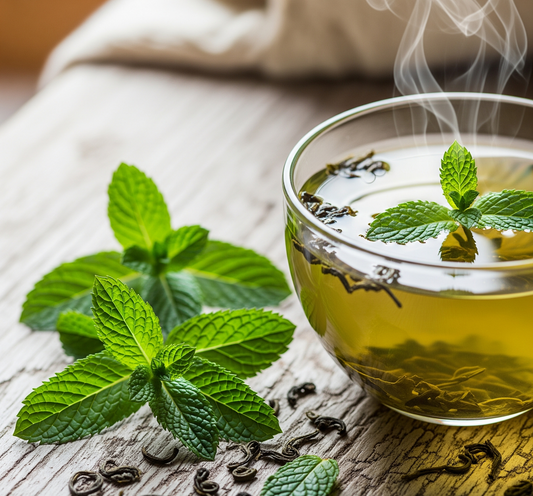Nepal’s tea culture is an important part of our history, our dazzling and diverse heritages.
From steaming local tea shops drawing friends and lovers together over a sweet cup, to cozy tea houses serving tourists arriving from all over the world to trek up some of the world’s highest peaks – tea is a staple of our social lives today.
With the unique flavors and unique styles in which Nepal’s teas can be prepared and savored, Nepal tea is growing beloved all over the world. As new tea lovers discover the joy of Nepal tea, we want to take them on a little journey into its history.
Recent Tea History: A Confluence of Giants Brings Tea Culture to Nepal.
Compared to the history of tea drinking and cultivation that spans millennia, the modern history of Nepal tea is extremely young. The tea industry of Nepal that supplies the globe with our tea began in the 1800s.
Since its origin in 1863, Nepal’s mainstream tea industry has been shaped and nurtured by its ties to the tea plantations of Darjeeling, India.
However, diplomatic ties between Nepal's Prime Minister and de-facto ruler, Jung Bahadur Rana, and China’s final imperial dynasty is also said to have played an important role in the origins of Nepal tea.

At the time, Colonel Gajraj Singh Thapa, Governor-General of Eastern Nepal and the son-in-law of Jung Bahadur Rana, is said to have taken a tour through Darjeeling. About a decade prior, the British Colonial Rule maintained by the East India Company had established commercial tea estates in Darjeeling to fulfill high demands for tea in Europe.

During his visit, Gajraj Singh Thapa is said to have been impressed by the tea plantations of Darjeeling, and swayed into orthodox tea culture by the cups of tea he consumed there.
Upon his return from Darjeeling, he expressed a desire to found a tea plantation in Nepal. His father-in-law granted him the Ilam district as a ‘Birta’, which was an imperialist system of tax-exempt land-distribution in the form of donations or payment. Gajraj Singh Thapa went on to found the first two tea plantations in Nepal: the Ilam tea estate and the Soktim tea estate.
The first tea saplings planted there were gifted to the prime minister by the Emperor of China, while many other saplings were imported to the plantation from Darjeeling.
The Unwritten Histories of Home-Made Tea:
Nepal’s complex terrain and the diversity of our peoples give rise to a complex tea history.
While the recent commercial history of Nepal tea certainly began in the late 1800s with the influence of British Colonial tea plantations in Darjeeling, we can’t rule out the existence of small-scale, localized tea cultures in Nepal before then.
We know that before modern tea plantations, tea, compressed into tea bricks and often enjoyed with the addition of salt, spread throughout the world through the ancient Silk Roads. Like most of the world’s ancient populations, Nepali traders and merchants had maintained vibrant and thriving trade in the region for centuries. The trans-Himalaya trade route and trade routes running through Nepal are some of the oldest in the region, dating back to the 7th century.
Moreover, the ancient Tea and Horse Caravan Road, known as the silk roads of Southwest China, connected Nepal to tea producing regions of China through two networks. One of them began in the original Pu’er tea producing regions in the Yunnan Province of China and connected to Nepal and India through Lhasa in Tibet.
With the trans-Himalayan trade routes connecting the people of Nepal to Tibet, Nepal’s traders maintained trade with Tibet for centuries. Most well recorded is the trade conducted by Kathmandu’s Newa merchants in Lhasa.
Though they are recorded to have mainly traded rice in exchange for salt, these trade routes also facilitated the influx of art, philosophy, and culture. We can surmise that these trade routes, along with Silk Road corridors running through Nepal, perhaps exposed traders and people living in nodal towns along the Silk Road to tea cultures that thrived in the region at the time.
Nepal Tea Collective’s most recent encounter with home-made, small-scale tea culture was in the Solukhumbu district (Everest region) of Nepal, where our Top of the World teas are cultivated. The Sherpa communities in this region are known for their pu’er teas, often enjoyed with butter and salt.
The culture of tea cultivation, tea making and tea preparation here can be said to have been a lasting influence of commodity and cultural exchange among Silk Road traders. With little recorded evidence, however, we can only speculate.

Nepal Tea Today:
In 1985, the government of Nepal established a ‘Tea Zone’ that extended across Eastern Nepal from the Ilam district, where the first tea plantations were established.
The Nepali tea industry has grown ever since, with tens of thousands Nepalis directly and indirectly employed in the production of tea. Therefore, though our modern history of tea is young, tea is becoming a catalyst for social and economic change for many remote farmers and producers across Nepal.
And within this young history of tea farming in Nepal, Nepal Tea Collective has its own story of carving out a space for Nepal tea in today’s global tea culture.

Photo by: Aashish Bhujel




